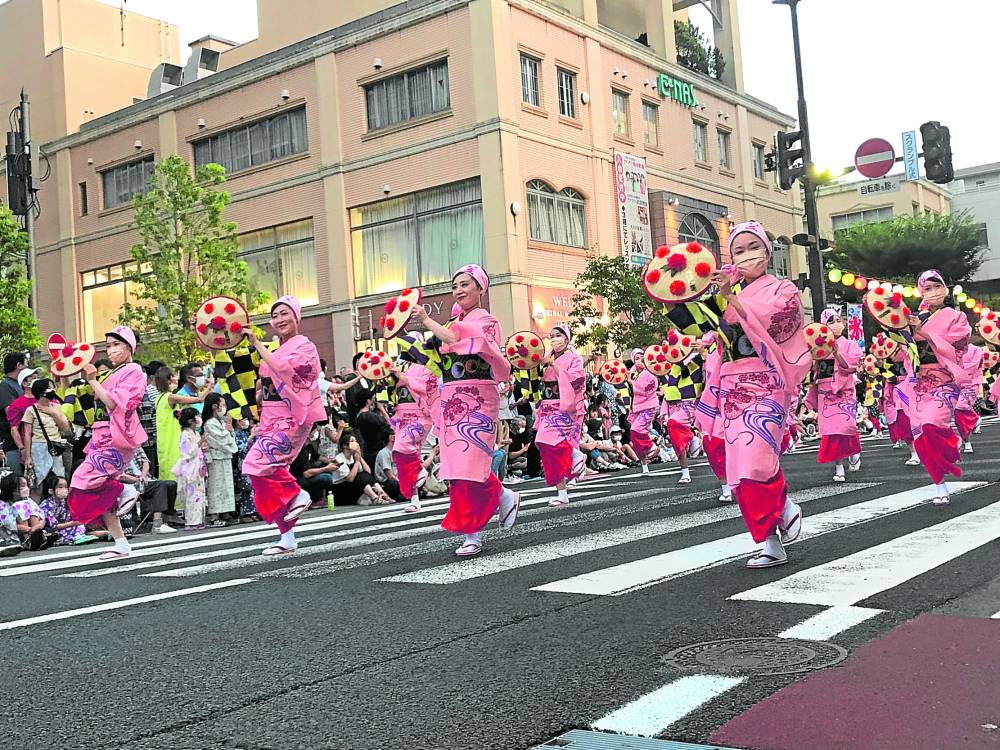Built in 1916, Bunshokan was originally used as a government building until 1975. Today, it serves as a local history museum in Yamagata. I received a Facebook message from my friend Philip, who is based in Singapore, saying he’ll be in Yamagata in two weeks and asking if I’m free to meet up. I was surprised and asked him why he chose Yamagata. Unless you’re an adventurous traveler who enjoys off-the-beaten-path destinations, Yamagata is not typically on one’s list of places to visit in Japan. However, it seems Philip is that kind of traveler.
Located in the Tohoku region of Japan, Yamagata Prefecture is about 400 kilometers north of Tokyo. Its name, which means “mountain shape” in Japanese, is fitting as mountains are a common sight in the region. If you’re looking for a break from the bustling cities of Tokyo or Osaka and want to experience a traditional Japanese matsuri (festival), consider visiting Yamagata City during the first weekend of August. To make the most of your trip, add a visit to Sendai City in nearby Miyagi Prefecture to your itinerary. Both cities host vibrant festivals during this time, giving you a chance to immerse yourself in the local culture.
One of Yamagata City’s main attractions is the Hanagasa Matsuri, a relatively new festival that started in 1963. The highlight of the festival is a lively parade where around 100 groups perform the traditional dance called hanagasa odori (flower hat dance) along a 1.5-km main street. The dancers wear flower hats, known as hanagasa, adorned with Yamagata Prefecture’s official flower, safflower. Despite not understanding the lyrics of the accompanying song, the festive atmosphere and energetic performances will captivate you. Many schools, companies, and local groups participate in the parade, making it a colorful and dynamic experience.
Before witnessing the Hanagasa Matsuri parade, take a walking tour around Yamagata Station. Visit the old Saiseikan Hospital Building, located in Kajo Park, which was built as a prefecture hospital in 1878 and now serves as a local history museum. The building’s architecture is a prime example of Japanese styles during the early Meiji period and is designated as a National Important Cultural Property. Admission to the museum is free. Nearby, you’ll find the Yamagata Museum of Art, displaying works by renowned Japanese artists such as Renoir, Monet, and Degas. Entrance fee for the museum is ¥800 (P320).
Bunshokan, also known as the Yamagata Prefectural Folk Museum, is another must-visit attraction. This historical building was originally a prefectural government building and served as a capitol until 1975. Built in 1916 during the Taisho period, it gained further recognition as scenes from the popular Japanese manga-turned-movie “Rurouni Kenshin” were filmed here. Admission to Bunshokan is free.
After exploring Yamagata City, head to Sendai City the next day to experience the Tanabata Matsuri or Star Festival. Celebrated nationwide, Sendai’s Tanabata Matsuri stands out with its intricately handcrafted decorations called sasakazari. The festival involves writing wishes on colorful strips of paper called tanzaku and hanging them on bamboo trees. Take a stroll through the shopping arcades and parks near Sendai Station to admire the vibrant sasakazari hanging from 10-meter-long bamboo poles adorned with origami pieces made from Japanese washi paper. The festival has a rich history dating back 400 years, believed to be promoted by Date Masamune, the first feudal lord of Sendai.
To make the most of your time in Sendai, consider purchasing a one-day pass for the Loople Sendai city loop bus, costing ¥630 (P250). This pass will take you to major sightseeing spots within Sendai City, including the former site of Sendai Castle, where you can enjoy panoramic views of the city. Don’t forget to indulge in Sendai’s local specialty, gyutan (grilled beef tongue), before heading back home.
Whether you decide to visit Yamagata or Sendai, both prefectures offer a wide range of activities and attractions depending on the season. The Hanagasa Matsuri and Tanabata Matsuri are just a glimpse of the cultural richness these regions have to offer. So, zehi (please), make sure to include them in your travel plans! Yamagata is easily accessible via the Yamagata Shinkansen Tsubasa from Tokyo, with a journey time of approximately two hours and 50 minutes. From Yamagata Station, you can take the JR Senzan Line or Yamako Bus to reach your destination. The fare is around ¥1,200 (P500). To return to Tokyo, take the Tohoku Shinkansen from Sendai Station, which will take about 100 minutes. The Hanagasa Matsuri takes place from August 5 to August 7, while the Tanabata Matsuri is held from August 6 to August 8.
Denial of responsibility! VigourTimes is an automatic aggregator of Global media. In each content, the hyperlink to the primary source is specified. All trademarks belong to their rightful owners, and all materials to their authors. For any complaint, please reach us at – [email protected]. We will take necessary action within 24 hours.


